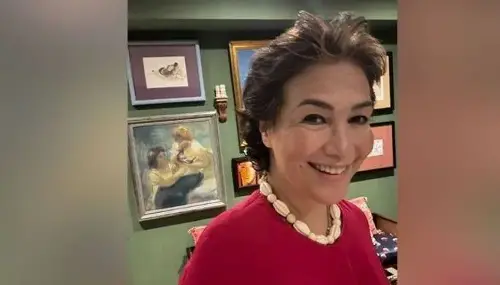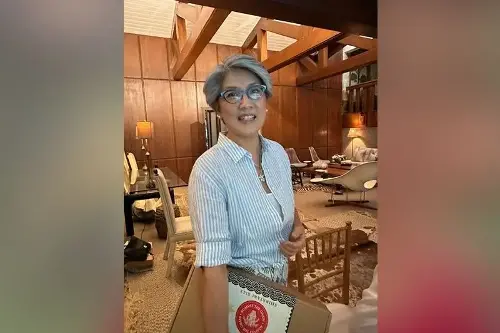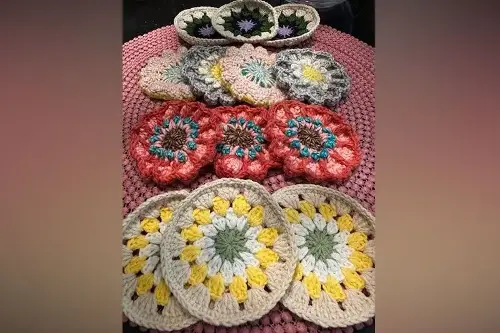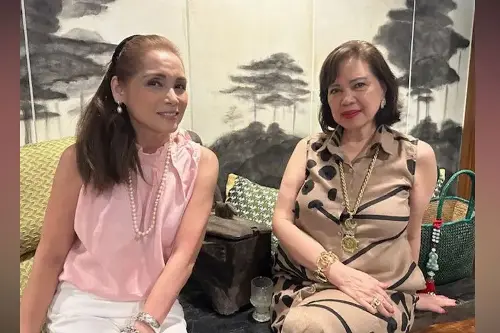
I have known Ricco Ocampo and his wife Tina Maristela Ocampo for over 30 years. Thanks to their entrepreneurial know-how, stores like Sari-Sari Store, Mix, The Black Shop, Anonymous, Dalagita and Pambahay came to life and dominated the retail scene in the ‘90s until the early 2000’s. These days, Ricco and Tina are also the proud owners of the affordable eyewear shop i2i New York.
Recently, retailer (and restaurateur) Ricco invited 30 guests to his home to give them a glimpse of his holiday collection. Trust Ricco and Tina to gather friends to lunch, chat, and most importantly, shop!
As we waited for lunch to be served, we guests were escorted to the lower ground floor of the Ocampo home, which Ricco converted into his showroom.

One room was for the collection of Forth Way, a line of luxurious bed and bath linens like bedsheets and pillowcases made from Egyptian cotton.
In another room was Casa Collective, a curated collection of home and interior accessories ranging from Moroccan rugs, handmade crocheted items like placemats and coasters made in La Union, and glassware and ceramics from Japan.

The last room was for Puro Lino, a line of elegant ladies’ linen wear that emphasizes comfort and style; and Celestina, named after Tina, an international brand that manufactures exquisite minaudieres and crocodile handbags.

Because Ricco and Tina are also foodies, they have also ventured into the food business as well with establishments like Kai, the modern Japanese restaurant in Greenbelt; Cerveseria, a vibrant Spanish restaurant in BGC known for its authentic flavors and lively atmosphere; Mangan, which serves beloved Kapampangan dishes; and Isogi, a quick-service Japanese eatery at San Antonio Plaza for on-the-go diners.

Given Ricco and Tina’s successes in the retail and food industries, and how much we could all learn from them, what else could I do but interview one of my favorite power couples? Here are excerpts from my conversation with them.

Who does the sourcing?
“We are both actively involved in the sourcing process.”
How do you choose the items that you will sell?

“Our selection process begins with identifying a broad market need or discovering a variety of products within a specific category that meet a customer want. Ultimately, our shared passion for the things we find and other considerations like the cost of the product, the logistics, and the target market’s interest to buy are likewise crucial deciding factors.”

Your son Emilio is also “trying his hands” in the food business. Tell us about him.
“Emilio began his food venture during the pandemic when he noticed a consistent shortage of Shirataki rice and noodles. Seizing this opportunity, he launched the Against the Grain and Root Rice Shirataki brands as affordable alternatives. After successfully introducing these products to major grocery chains like Market Place, SM, Robinsons, and specialty health food stores, he expanded his culinary endeavors by opening Jabronis, a New York-style pizza concept at Rockwell. He is also set to launch a full restaurant version of Jabronis at both Molito Ayala Alabang and Rockwell Santolan, fueled by his passion for the pizza he enjoyed during his college years in New York.”

Are your other children also actively involved in the family businesses?
“Yes! Betina, our eldest, launched her fashion line, Betina, shortly after college. She is now studying interior design in Los Angeles, aiming to blend her passion for fashion and design into a future business.
“Selina is a part-owner of Pepper PH, a social media vlog that features modern recipes and product endorsements that connects with a culinary audience.
“Juliana, our third daughter, resides in New York and works as the international marketing director for the Standard Hotel, utilizing her education from Boston to excel in her career.”
Tell us about your experiences during the pandemic lockdown. How did you cope and stay afloat in the retail and food business?
“The pandemic challenged us to streamline operations, reducing the need for multiple layers of management. We reengineered our systems, simplified reports, and outsourced select operational functions. This experience taught us that creativity isn’t limited by budget; instead, it thrives on resourcefulness. By focusing on spending less while maximizing our profits, we adapted our core businesses to survive and even flourish during tough times.”
How has the retail landscape changed?
“The rise of online shopping significantly transformed the retail landscape. The pandemic accelerated this shift as consumers turned to digital platforms for their shopping needs. While the variety and convenience of online shopping are appealing, many shoppers now miss the personal touch and care they receive in physical stores. The tactile experience of seeing and trying on clothing in beautifully designed spaces is irreplaceable.”
What is the fashion trend these days?
“Currently, there’s a fascinating intersection between fashion and creative expression. With the power of social media, individuals can now design and showcase their own dresses, drawing inspiration from past fashion trends. This democratization of fashion allows anyone to create a brand and gain recognition, reshaping the industry’s landscape.”
What new ventures are you looking into for 2025?
Tina: “In 2025, we plan to expand and rejuvenate the businesses that thrived during the pandemic. Our focus will be on reimagining our brands and introducing innovative features for our eyewear line, i2i NY. I’m excited to return to the original aesthetics of my bag line, Celestina, which celebrates Philippine craftsmanship and materials. There’s been a resurgence of interest from cool stores in Asia that previously carried my designs, and I’m eager to make these products available again worldwide.
“Additionally, I’ve recently discovered a passion for home decor. I love curating unique treasures that can instantly elevate any living space. Creating flower arrangements and tablescapes has also become a joy of mine, and I’m considering turning this into a business venture in the near future.”
Talk about the quirky buying habits of Pinoys.
“Filipino shoppers have some fascinating buying habits shaped by a mix of practicality and individual expression. Price and brand perception often dictate their choices, leading many to opt for look-alikes when something exceeds their budget. However, the savvier shoppers remain unfazed by media hype; they prefer to express their individuality through their unique style. This demographic often seeks out vintage pieces and treasures discovered during their travels, showcasing their distinct tastes and personal flair.”
Lastly, please share an unforgettable anecdote from your years as retailers.
Tina: “One of my most unforgettable moments in retail was being featured in Vogue USA in 2006. The magazine highlighted three of my Celestina shell minaudieres, along with me as the designer, on a full page typically reserved for major fashion advertisers. This recognition not only validated my work but also immortalized those three pieces in a way I’ll always cherish. It remains one of the highlights of my career and a fond memory I hold dear.”